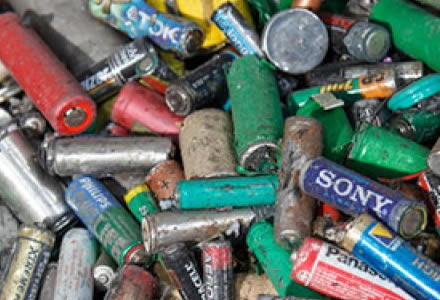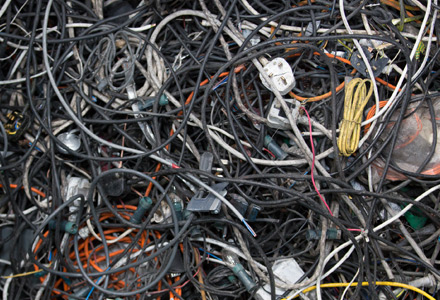Emergencies
Emergencies with Waste batteries
Waste batteries are manufactured to high quality standards and are found in many electronic devices. However, in certain circumstances they can bring about particular safety concerns and can pose a significant risk of injury or property damage. Care should be taken to minimise the risk of a battery being damaged. However, this is sometimes unavoidable. The following guidance should enable the identification of a dangerous damaged battery and where it is safe to do so, should enable the management of a dangerous damaged battery until the emergency services arrive.

Identification of a Dangerous Damaged Battery
Damaged lithium batteries will sometimes undergo a self sustaining exothermic process known as thermal runaway. This occurs when a damaged cell begins to self heat, causing expansion or evaporation of the electrolyte within. This can result in swelling of the battery case to cater for the expanded volume, hissing as a result of venting of the over pressurised electrolyte vapour, smoking as a result of the high temperatures reached within the battery, etc.
Managing a Dangerous Damaged Battery
If it is suspected that a battery has become damaged (not charging is one early indicator), the manufacturer’s guidance should be consulted to determine the most appropriate course of action.
As per guidance from Eucobat, dry sand is an appropriate extinguishing material for lithium battery fires. Care should be taken avoid contact with water as this could cause an electrical short, increase the heat release rate from the battery or result in the formation of flammable vapours.
Care should be taken before approaching a damaged battery to ensure that no harmful vapours are present. If the battery is hissing or if there is a soapy detergent-like smell present the emergency services should be notified and the battery should not be approached.
If a battery is observed which is swollen, hissing, smoking, hot, leaking, etc. or if there is a soapy, detergent-like smell present then it could be an indication that it has become dangerously damaged. The emergency services should be notified immediately.
A damaged lithium battery may catch fire or explode without warning. If it has been decided to move the battery extreme caution should be exercised. If there are any doubts about the ability to relocate or move the damaged battery safely, it should not be attempted. The emergency services should be called before attempting to move a dangerous damaged battery.
Emergencies with Waste Lamps
Waste gas discharge lamps such as fluorescent tube lamps and compact fluorescent lamps (CFLs) contain a small amount of hazardous material in the form of mercury vapour and metal dust. The shards from a broken lamp can also cause injury and this injury can be complicated by the presence of the harmful metal dust.
Managing a Broken Lamp
In the event of breakage of a lamp, the following actions are recommended:
- The area should be ventilated immediately by opening all windows.
- The broken lamp should be carefully cleared up using stiff cardboard to “scoop” up the broken material.
- Brushes and vacuum cleaners should be avoided since this could raise the dust and increase the safety risks.
- While clearing up a broken lamp, be sure to wear appropriate PPE to protect against respiratory injury from dusts and vapours as well as other appropriate PPE to guard against cuts from sharp debris.
If a person becomes unwell as a result of contact with a broken lamp, the emergency services should be called immediately.
Further safety guidance on the management of broken gas discharge lamps can be found in the following document: Lamp Safety Leaflet
Emergencies with WEEE
WEEE includes anything that uses a battery or has a plug. It primarily covers temperature exchange equipment, screens, lamps, large equipment, small equipment and small IT equipment.

For emergencies concerning WEEE, the emergency services should be called immediately.
In the event of the formation of a harmful atmosphere as a result of storage of temperature exchange equipment indoors, care should be taken to restrict access to the area and safely ventilate any harmful vapours which may accumulate.
For employers storing temperature exchange equipment, a formal risk assessment should be completed on the formation of harmful atmospheres and an emergency rescue strategy developed. Successful rescue and resuscitation could be time limited where a person is overcome by a harmful atmosphere. The availability of a pre-planned rescue strategy and appropriate equipment is essential.
The HSA has produced some guidance on confined spaces and harmful atmospheres. It can be found here: HSA guidance on confined spaces and harmful atmospheres »
Further information

Recharge has produced some good guidance on lithium batteries in the form of a lithium-ion battery fact sheet. It is available here.
The Environmental Protection Agency (EPA) has produced some guidance on the storage of hazardous household waste. It can be found here.
Further information is available upon request from operations@weeeireland.ie
